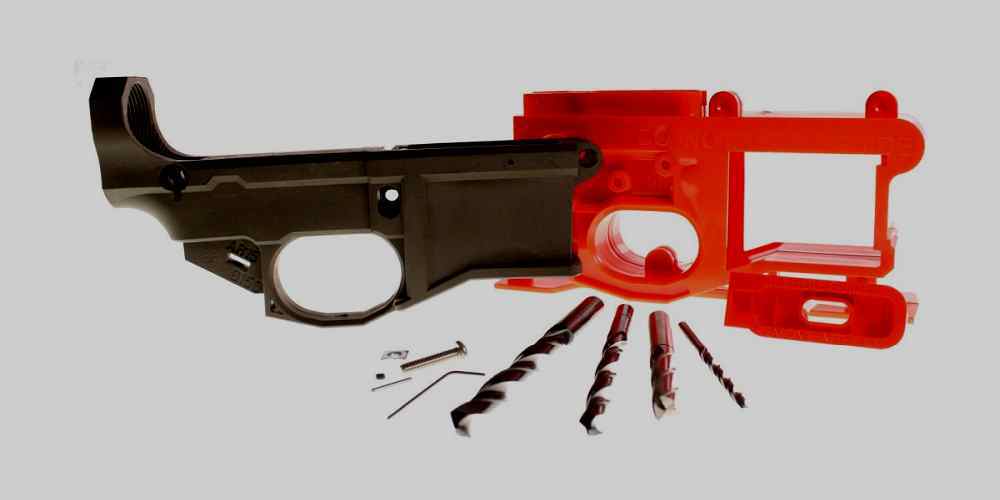“The Heart of Your Firearm: Unlocking the Potential of Your AR15 Build with the Right Lower Receiver!”
Exploring the Different Types of AR15 Lower Receivers: What to Look for When Choosing the Right One for Your Build
When it comes to building an AR15, the lower receiver is the foundation of the rifle. It’s the part that houses the trigger, magazine release, and other components, and it’s the part that must be legally registered with the Bureau of Alcohol, Tobacco, Firearms, and Explosives (ATF). With so many different types of AR15 lower receivers available, it can be difficult to know which one is right for your build. Here’s what you need to know when choosing the right lower receiver for your AR15.
First, you’ll need to decide between a forged lower receiver and a billet lower receiver. Forged lower receivers are made from a single piece of metal that is heated and then pounded into shape. This process makes them strong and lightweight, and they’re the most common type of lower receiver. Billet lower receivers are made from a single piece of metal that is machined into shape. They’re usually heavier than forged lower receivers, but they offer more customization options.
Next, you’ll need to decide between a stripped lower receiver and a complete lower receiver. A stripped lower receiver is just the bare frame of the lower receiver, and it requires additional parts to be added before it can be used. A complete lower receiver includes all the necessary parts, such as the trigger, magazine release, and safety selector.
Finally, you’ll need to decide between a mil-spec lower receiver and a non-mil-spec lower receiver. Mil-spec lower receivers are designed to meet the military’s specifications for AR15s, and they’re the most common type of lower receiver. Non-mil-spec lower receivers are designed for civilian use and may have additional features, such as an enlarged trigger guard or an ambidextrous magazine release.
Choosing the right lower receiver for your AR15 build can be a daunting task, but with a little research and knowledge, you can find the perfect one for your needs. Consider the type of lower receiver, the features you want, and the budget you have to work with, and you’ll be sure to find the perfect lower receiver for your build.
The Pros and Cons of Different AR15 Lower Receiver Materials: What You Need to Know Before Making Your Selection
When it comes to selecting the right AR15 lower receiver for your rifle, there are a few different materials to choose from. Each material has its own pros and cons, so it’s important to understand the differences before making your selection. Here’s what you need to know about the different AR15 lower receiver materials.
Aluminum: Aluminum is the most common material used for AR15 lower receivers. It’s lightweight, durable, and relatively inexpensive. It’s also easy to machine and can be anodized for a custom look. The downside is that aluminum is not as strong as some of the other materials, so it may not be the best choice for heavy-duty use.
Polymer: Polymer is a lightweight and inexpensive material that is becoming increasingly popular for AR15 lower receivers. It’s easy to machine and can be molded into a variety of shapes and sizes. The downside is that polymer is not as strong as aluminum or steel, so it may not be the best choice for heavy-duty use.

Steel: Steel is the strongest material used for AR15 lower receivers. It’s also the most expensive, but it’s extremely durable and can withstand a lot of abuse. The downside is that steel is heavier than aluminum or polymer, so it may not be the best choice for lightweight builds.
Titanium: Titanium is a lightweight and strong material that is becoming increasingly popular for AR15 lower receivers. It’s more expensive than aluminum or polymer, but it’s extremely durable and can withstand a lot of abuse. The downside is that titanium is difficult to machine and can be expensive to anodize.
Now that you know the pros and cons of the different AR15 lower receiver materials, you can make an informed decision about which one is right for you. Keep in mind that the material you choose will depend on your budget, intended use, and personal preference. No matter which material you choose, you can rest assured that your AR15 lower receiver will be reliable and durable.
How to Choose the Right AR15 Lower Receiver for Your Build: Tips and Tricks for Finding the Perfect Fit
When it comes to building an AR15, the lower receiver is the foundation of the entire rifle. It’s the part that houses the trigger, magazine release, and other components, and it’s the part that must be legally registered with the Bureau of Alcohol, Tobacco, Firearms, and Explosives (ATF). Choosing the right lower receiver for your build can be a daunting task, but with a few tips and tricks, you can find the perfect fit for your needs.
First, consider the type of lower receiver you need. There are two main types: stripped and complete. A stripped lower receiver is just the bare frame, while a complete lower receiver includes all the parts necessary to build a functioning rifle. If you’re just starting out, a complete lower receiver is the way to go. It’s easier to assemble and you won’t have to worry about buying all the individual parts.
Next, think about the material you want your lower receiver to be made of. Aluminum is the most common material used for AR15 lower receivers, but there are also polymer and billet options available. Aluminum is lightweight and durable, while polymer is lightweight and corrosion-resistant. Billet is the most expensive option, but it’s also the strongest and most customizable.
Finally, consider the features you want your lower receiver to have. Some lower receivers come with an integrated trigger guard, while others require you to purchase one separately. Some have an extended magazine release, while others have a standard one. And finally some have an ambidextrous safety selector, while others have a standard one. Think about what features you need and make sure the lower receiver you choose has them.
Choosing the right lower receiver for your AR15 build can be a daunting task, but with a few tips and tricks, you can find the perfect fit for your needs. Consider the type of lower receiver you need, the material you want it to be made of, and the features you want it to have. With a little research and some careful consideration, you can find the perfect lower receiver for your build.





